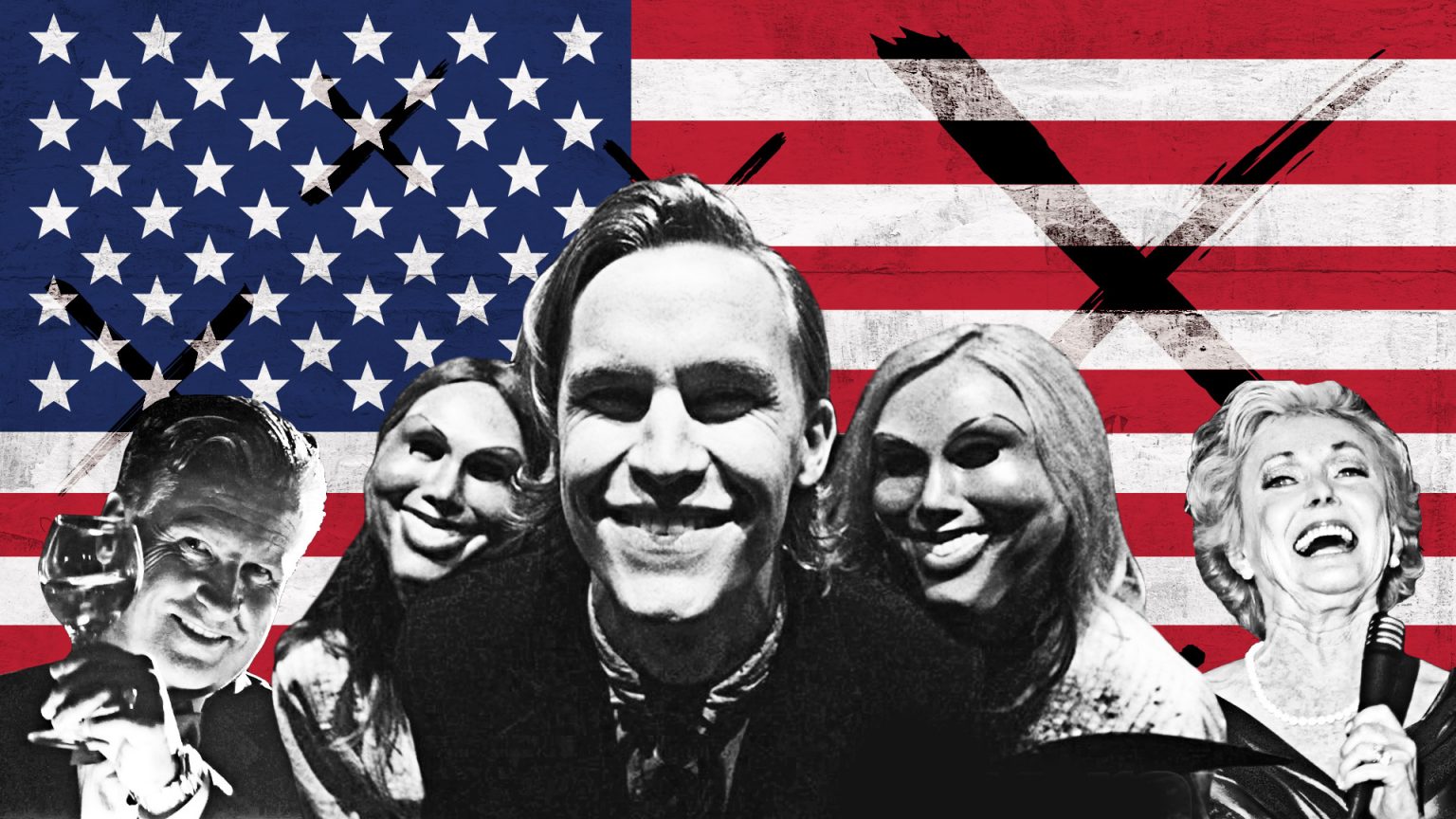It’s 2022 and a newly elected government body has mandated that, for one night each year, all crimes will be legal, including (and especially) murder.
Several years ago, this premise would have only sounded like the plot of a movie. But in 2018, a year tragically filled with mass shootings—and a lack of legislative movement to end gun violence—the images it conjures veer alarmingly close to reality.
The creative premise of James DeMonaco’s Purge films is by far its greatest strength. Critics have been divided: while many people enjoy the films, just as many find them to be nothing more than an original concept. Regardless of whether or not one likes the films, there is undeniably something to be said about how the Purge films portray violence in America. The Purge and its sequels, Purge: Anarchy and Purge: Election Year, may suggest that if there is a kind of violence unique to the United States, it is born out of a capitalistic system that rewards and encourages violence for the sake of wealth and upward mobility.
The first Purge film centers on a wealthy family accustomed to spending the yearly purge nights relatively safe inside their gated community, with a state-of-the-art security system blocking all possible entryways into their house. This focus on a wealthy family implies that in the world with “purges,” even the rich cannot truly escape the violence brought about by capitalism. Moreover, the fact that the main character, James Sandin (Ethan Hawke), makes his living selling security systems creates a dynamic between him and his neighbors that ultimately leads to his downfall. Towards the end of the film, one neighbor explains why she wants to kill him and his family, saying, “You sold us all these security systems and then rubbed the money you made in our faces.” Sandin is killed, and while the remaining members of his family survive the night, the neighbor’s statement acts as a critique of those with seemingly endless amounts of money. Having wealth does not necessarily make one more rational, empathetic, or impervious to the class violence that results from capitalism.
Purge: Anarchy shifts its focus to everyday citizens and their experience of the purge night. None of the characters live in gated communities and, as a result, they must face the more immediate threats experienced by average purge participants. The main plot of the film involves the discovery that, in the years since the first purge was established, a slice of the wealthy class has exploited the purge night as a way to make even more money. There are even specialized groups that sell kidnapped victims to the wealthy class for twisted purge rituals. Once again DeMonaco implies that, given the opportunity to commit murder with impunity, people will seek to commodify the act, more than anything else. Purge: Anarchy could be an entirely different film if it focused on different motivations for murder, like tales of revenge that play out on purge night. Ultimately, the first two installments in the Purge franchise solidify the notion that, if America is indeed a uniquely violent place, that violence is rooted in the desire for money.
Purge: Election Year takes the deepest dive yet into the role that capitalism plays in the violent “necessity” of the purge nights. The general populace uncovers more about how the powers that be utilize purge night activities to manipulate financial markets. Background news footage played during the film implies that, within the Purge universe, capitalism has the opportunity to lean heavily on murder as a solution for competition. There is no need to innovate or embody any of the standard capitalistic principles; businesses need only invest in security and hired guns to turn a profit. In that regard, the financial prosperity on display in the Purge universe only happens because death and destruction among the poor are guaranteed one night a year.
By the third film in the franchise, the franchise’s ideas manifest as an entire political movement backed by the main character, Senator Charlie Roan (played by Elizabeth Mitchell), who informs the public that the main victims of the purge are the poor. On one hand, this is true because the poor are always vulnerable given their lack of access to gated communities and expensive security systems. More importantly, though, the audience now knows that the poor are outright targets. After all, you can increase prosperity simply by murdering anyone who hasn’t adhered to the standards of ruthless class mobility that define the other 364 nights each year. Essentially, the purge is capitalism in its most brutal and exaggerated form: a cold, competitive system with zero empathy.
So here we are, in 2018, and the series’ latest installment, The First Purge, hits theaters today, on the most patriotic of American holidays: July 4th. While DeMonaco has handed over the directing reins to Gerard McMurray, it seems unlikely that this new film will lose the symbolism that the series has built so far- after all, DeMonaco still served as screenwriter and producer. If that’s the case, if this fourth film continues to convey American violence as a consequence of capitalism, perhaps it will wholly solidify the theory that violence in the United States is fundamentally linked to the capitalist system that has been a part of American politics since the country’s birth.




